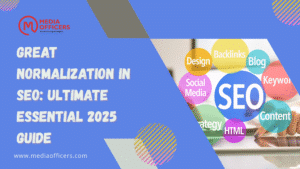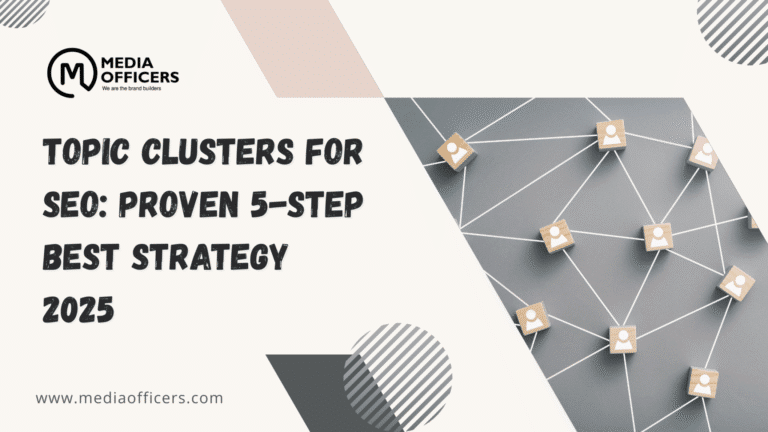Great Normalization in SEO is reshaping how brands win online, moving beyond vanity traffic to tactics that drive real conversions. This new era prioritizes intent, citations, and brand trust over simple volume, marking a decisive shift from the old, traffic-for-traffic playbook.
In recent years the industry celebrated rising sessions and shareable dashboards. Then the Great Decoupling exposed how many top-of-funnel clicks failed to translate into revenue or meaningful engagement. The Great Normalization in SEO is the corrective arc we need, elevating grounded prompts, trusted sources, and measurable outcomes.
Understanding the Great Normalization in SEO
The term Great Normalization in SEO captures a market-wide reevaluation: top-level impressions are no longer the north star. The era of programmatic, high-volume glossary and FAQ pages that chased keyword saturation is fading as AI-driven search grows more capable of summarizing consensus content. In practice, the Great Normalization in SEO means measured traffic, higher intent readers, and stronger attribution models. This shift marks a return to signals that matter for real business impact.
The Great Normalization in SEO also reframes how we treat content quality. It isn’t about packing pages with keywords; it’s about delivering grounded, sourced answers that earn citations and trust. Brands that invest in credible sources and context will see their content rise in relevance even as AI delivers quick overviews to users. This is the core promise of the Great Normalization in SEO era.
Why top-of-funnel content collapsed and what it means now
The AI era made top-of-funnel informational pages less effective. AI models can summarize consensus information, produce quick overviews, and answer generic questions without requiring a click to a brand site. As a result, the Great Normalization in SEO highlights a shift away from broad, low-intent content toward material that demands citations and brand voices. This shift is the essence of the Great Normalization in SEO.
Real-world signals across multiple sectors confirm this trend. The Great Normalization in SEO shows that top-of-funnel traffic no longer reliably equates to engagement or revenue. This is why many teams redirect budgets toward grounded, high-value content that can be cited, referenced, and trusted by search engines and users alike.
- A B2B cybertech glossary page saw a 70% drop in traffic after AI-driven previews became prevalent.
- A martech company experienced a similar 70% decline in its FAQ content.
- A business operations brand lost around 60% of visits to its definitions section.
- A B2B data operations client reported a 55% decrease in glossary traffic.
AI is the great equalizer. Top-of-funnel clicks are being eaten alive by AI’s ability to summarize and answer questions using its own training data, reducing brand exposure and reducing the odds of a click-path that ends in a conversion. When content is pre-loaded in AI’s training data or lacks LLM grounding, it struggles to earn citations or brand mentions in search results. This reality reinforces the need for the Great Normalization in SEO to guide strategy toward grounded, referenceable content.
The new focus areas in the AI era
Educational blogs, once a staple of many inbound strategies, no longer reliably drive growth in the AI era. Across dozens of Google Search Console accounts, the trend is clear: top-of-funnel informational pages have become less influential for conversions. The Great Normalization in SEO therefore pushes teams to pivot toward content that is groundable, citable, and trusted by brands. The Great Normalization in SEO emphasizes authoritativeness and originality, not just summary.
Mid-funnel content that compares solutions or evaluates options continues to attract users who are actively considering a purchase. Grounded prompts and real citations help signals to search engines that your content is trustworthy and worth recommending. Bottom-funnel intent pages—such as product comparisons, case studies, and robust buyer guides—remain critical for organic revenue attribution. This is precisely where the Great Normalization in SEO shines: it rewards content that guides decisions with credible proof.
Branded content holds steady. Homepage traffic appears to be rising in AI-era analyses, suggesting that established brands with a strong reputation can weather AI-dominant consensus topics. The Great Normalization in SEO discourages vanity traffic and favors ecosystem-building and brand-centric content that signals value beyond generic topics. This approach aligns with the Great Normalization in SEO philosophy and reinforces the importance of brand credibility in search results.
As metrics shift, the way we measure SEO also changes. Prompt monitoring in AI search is becoming the new keyword tracking, where prompts that require grounding or real-time citations are the ones that matter. Irrelevant prompts chasing generic AI answers are not useful without brand mentions or citations. This is the core idea of the Great Normalization in SEO journey and a reminder to align measurement with impact rather than impressions alone.
Actionable ideas for thriving in the Great Normalization
To align with the Great Normalization in SEO, adjust your focus from chasing top-of-funnel volume to cultivating meaningful, attributable engagement. The following ideas help teams adapt to the new reality and reflect the Great Normalization in SEO mindset.
- Prioritize bottom-of-funnel and branded content that directly influences conversions. Focus on trust signals, unique citations, and clear calls to action. This shift mirrors the Great Normalization in SEO approach.
- Create AI-optimized content that requires LLM grounding and citations. Build finite, source-backed pages that AI can reference reliably in overviews and comparisons. This is a practical application of the Great Normalization in SEO.
- Track metrics that matter: organic search performance tied to attribution, grounded prompts, and brand mentions. De-emphasize vanity impressions and unqualified rankings. This is essential in the Great Normalization in SEO era.
- Diversify channels to reduce reliance on organic search alone. Invest in LinkedIn, YouTube, webinars, social ads, and ecosystem visibility to capture engaged audiences even when AI reduces clicks. The Great Normalization in SEO encourages broad, credible ecosystems.
Step-by-Step SEO Strategy to Execute
Analyze Search Intent & Keywords. Start by identifying the main user intent behind your topic. Choose a clear primary Focus Keyword, and assemble 3-4 related LSIs to support the topic. Use this as the backbone of your content and ensure it appears in headings and opening paragraphs. This is a practical application of the Great Normalization in SEO approach.
Craft Core SEO Elements. Build an SEO title that starts with the Focus Keyword, includes a power word, a sentiment word, and a number, and stays under 65 characters. Write a compelling meta description of 150-160 characters that includes the Focus Keyword and a strong call-to-action. This structure embodies the Great Normalization in SEO best practices.
Construct the Article Content. Structure with clear H2 and H3 tags, keep paragraphs to 2-3 sentences, and weave both the Focus Keyword and related terms naturally into headings and body. Use strong tags for essential concepts and incorporate bullet lists for readability. End with a Frequently Asked Questions section before the conclusion. This mirrors the Great Normalization in SEO discipline.
Frequently Asked Questions
What is the Great Normalization in SEO?
The Great Normalization in SEO refers to the industry-wide shift away from vanity traffic toward higher quality, grounded content that emphasizes intent, credible sources, and measurable outcomes.
Why is top-of-funnel content losing value in 2025?
AI-driven search can summarize consensus information, create zero-click answers, and surface overviews without always driving qualified traffic, which lowers the value of generic top-of-funnel content. This is at the heart of the Great Normalization in SEO.
What content should I invest in during the AI era?
Invest in mid-to-bottom funnel content and branded assets, including solution comparisons, buyer guides, and case studies that require citations and real references. This aligns with the Great Normalization in SEO approach.
How should I measure SEO success today?
Measure grounded prompts, organic attribution, and brand mentions. Track performance of pages with strong citations rather than vanity impressions. This aligns with the Great Normalization in SEO framework.
Conclusion: The Great Normalization in SEO marks a needed recalibration that rewards brands for quality, trust, and measurable impact. By focusing on branded, grounded, and conversion-oriented content, and by diversifying channels, your organization can thrive in a world where AI-driven answers and human insight coexist. This is the practical essence of the Great Normalization in SEO.





